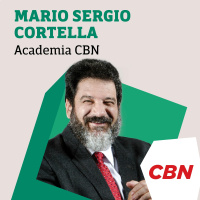Synopsis
Bletchley Park is the historic site of secret British codebreaking activities during WWII.It is the birthplace of modern computing. Winston Churchill described the Codebreakers as "The geese who laid the golden egg but never cackled." Here you will find stories told by the codebreakers, staff and volunteers, audio from events and lectures, stories which are still emerging and reports on the progress of the development of Bletchley Park. Bletchley Park (http://www.bletchleypark.org.uk)
Episodes
-
E97 - Early Days
10/10/2019 Duration: 01h13minOctober 2019 “Gas masks are to be taken” so ends what seems a rather mundane government memo dated the 2nd of August 1939. It importance becomes apparent when you discover this was the Move Order sent to the staff of the Government Code and Cypher School. As Hitler threatened Poland it seemed another war in Europe was inevitable, so it was decided the staff of GC&CS should move to their War Station in the Buckinghamshire countryside. With hindsight we now know that over the next 6 long years, Bletchley Park would become a codebreaking factory, but what were those Early Days really like? In this “It Happened Here” episode, our host, Erica Munro & Bletchley Park’s Research Officer Dr Thomas Cheetham take us back to August 1939 and through documents held in the archives tell the story of the arrival at Bletchley and dispel a few myths along the way. Special thanks to Mr Ben Thomson for voicing our archival documents. In memoriam, Jane Fawcett MBE (1921–2016) FO Civilian Hut 6 Image courtesy
-
E96 - Market Garden
17/09/2019 Duration: 01h01minSeptember 2019 By early September 1944, with the Normandy Campaign behind them, 6 Allied Armies were racing across Northern France and into the Low Countries. Ahead of them the remnants of the German Army were retreating to the borders of the Fatherland. To many on the Allied side it seemed that a bold action was all that was needed to finish the war by Christmas. The plan called for a carpet of paratroopers to capture and hold bridges along a 64 mile road, allowing an armoured spearhead to reach its goal of the bridge at Arnhem. If successful this would leave the route to the industrial heart of Germany, The Ruhr, wide open. For this “It Happened Here” episode, Bletchley Park’s Research Officer Dr Thomas Cheetham has been looking in detail at the entire operation, including Bletchley Park’s contribution, to tell us if it always was going to be just A Bridge Too Far. Special thanks to Mr Ben Thomson for playing the role of our Hut 3 Intelligence Officer. In memoriam, Eileen Younghusband BEM (1921-2
-
E95 - Veterans’ Reunion 2019
10/09/2019 Duration: 52minSeptember 2019 Each year, to mark the arrival of the first Codebreakers at Station X in 1939 we hold our Veterans Reunion. This year it was made more poignant as the date fell on the 80th anniversary of the invasion of Poland. The Reunion is always a very special day for us at Bletchley Park as it gives us the chance to thank our Veterans for their service. For the Veterans it is a chance to meet old friends, reminisce and tell stories of their time here. This is the podcasts 8th reunion and this year we were lucky enough to sit down with four of these amazing people to have a chat. Many are accompanied by their families and for them it can be very emotional as for the first time they get to hear in detail what their relation did during World War Two. Christine Brose set this year’s record for travelling to the reunion, coming with her two sons from Tasmania. She insists she “didn’t do anything important” but at age seventeen in 1941 she ended up working in Hut 8 Naval Section under Hugh Alexander.
-
E94 - 90 Days
10/08/2019 Duration: 01h04minAugust 2019 In earlier episodes this year we have concentrated on the preparations for, and the events of D-Day itself, the 6th of June. However D-Day was only the beginning of the Normandy Campaign. The Allies had to face an enemy determined to throw them back in to the sea and it led to some of the bitterest fighting that Western Europe saw in WW2. It would eventually, after three months, end in a massive victory for the Allies and the liberation of Paris at the end of August 1944. In this “It Happened Here” episode, we see how Bletchley Park continued to contribute to Allied success. We’ll find out how the nature of this contribution changed from one of supporting the planning of future operations, to one of supporting an ongoing battle. Bletchley Park’s Research Officer Thomas Cheetham has been exploring the role of ULTRA intelligence in this crucial campaign. #BPark, #Bletchleypark, #WW2, #DDay75, #BletchleyParkDDay
-
E93 - The GPO and GC&CS
23/07/2019 Duration: 01h31sJuly 2019 Most people now know of the work carried out by Tommy Flowers and his team that ultimately led to the design and construction of ‘Colossus’, the world’s first large-scale electronic digital computer. Flowers worked for the General Post Office at their Research Station at Dollis Hill but that work was just one part of the connection between the GPO and the Codebreakers at Bletchley Park. With the opening this year of our new exhibition, D-Day: Interception, Intelligence, Invasion, that link with the modern GPO, British Telecom now called BT, continues. In this episode our research historian, Dr David Kenyon, sat down with the Head of Heritage and Archives for BT, David Hay, to talk about our shared history. Also in this episode we bring you something very special indeed. In 1981 at the modern equivalent of Dollis Hill, Adastral Park, Tommy Flowers and some of his original team gave a talk about their wartime work and thanks to BT we can bring you highlights of that reunion. BT is the So
-
E92 - The D-Day Dodgers
09/07/2019 Duration: 01h02minJuly 2019 In this It Happened Here episode we leave the invasion of Western Europe and return to the hard fought battles of the Italian Campaign. Since first invading in September 1943, Italy had been anything but the “soft underbelly” that Churchill had called it. Finally in the spring and summer of 1944, after months of being held back by German forces defending Italy, things started to move. With the eyes of the world on Normandy the men fighting their way up the boot of Italy felt they had been forgotten back home, but they were not by codebreakers at Bletchley Park. Our research historian, Dr David Kenyon, will be your guide to the vital support GC&CS gave to the Army’s on the Italian Front. It would be their hard fighting that would ultimately lead to the capture of the first of the Axis Capitals, Rome. We also look at the absolutely enormous offensive launched by the Soviet forces in late June 1944, Operation Bagration. Very special thanks to Lowden Jim for his recording of The D-Day
-
E91 – David Kenyon presents: Bletchley Park and D-Day
20/06/2019 Duration: 48minJune 2019 On June the 6th 2019, Bletchley Park ran a number of events to mark the 75th anniversary of D-Day. Never before seen handwritten decrypts were release to the public and we took over Twitter for the day to Tweet those very messages in real time, as if it was 1944. You can now find these messages on our website at www.bletchleypark.org.uk/news/bletchley-park-and-d-day In this episode we take you to the dining room of the iconic mansion and bring you the talk that our research historian Dr David Kenyon gave on the day to celebrate the launch of his new book; Bletchley Park and D-Day. Bletchley Park and D-Day is published by Yale University Press. Image: ©Bletchley Park Trust 2019 #BPark, #Bletchleypark, #WW2, #DDay75, #BletchleyParkDDay
-
E90 – Overlord
05/06/2019 Duration: 54minJune 2019 75 years ago today, more than 150,000 allied troops were boarding planes, gliders and landing craft as they prepared to invade Fortress Europe in Operation Overlord, the Normandy Invasion. Meanwhile, 200 miles away in the Buckinghamshire countryside the Codebreakers of GC&CS were also ready and waiting. A special section, known as NSV(X), spent the day decrypting German messages and forwarding that vital intelligence to allied commanders. In many cases only two hours after the German operators had sent them. Today at Bletchley Park our Archive holds hundreds of these handwritten decrypts and using a selection of these we tell the story of The Longest Day. Our Research Historian Dr David Kenyon & Research Officer Thomas Cheetham will be your guides. Also Veterans’ Pat Davies & Colette Cook share a couple of short memories from that eventful day. Special thanks to Mr Ben Thomson for playing the role of our Intelligence Officer. Image: ©Bletchley Park Trust 2019 #BPark, #Bletc
-
E89 - Bletchley Park and D-Day
23/05/2019 Duration: 23minMay 2019 With the opening of D-Day: Interception, Intelligence, Invasion, the key role that Bletchley Park played in the success of the Normandy campaign is finally being told. Now, a new book written by our very own research historian, Dr David Kenyon adds even more depth to that story. Using previously classified documents, David casts the work of Bletchley Park in a new light, as not just a codebreaking establishment, but as a fully developed intelligence agency. This account reveals the true character of GC&CS’s vital contribution to success in Normandy, and ultimately, Allied victory. Podcast Producer Mark Cotton sat down with David to talk about the book, the process of writing military history, and the challenges of re-writing a well-known story in the light of new evidence. Image: ©Yale University Press #BPark, #Bletchleypark, #WW2, #DDay75
-
E88 - The Tide of Victory
09/05/2019 Duration: 58minMay 2019 It Happened Here this month takes us to a Britain who’s south coast in May 1944 resembled one huge army camp as over 2 million men waited for D-Day. In the Buckinghamshire countryside the staff at GC&CS carried on feeding detailed and crucial intelligence to the Allied forces that would play an integral part in the success of the upcoming Operation Overlord. The Western Front Committee was established at Bletchley Park in October 1942 and for the next 18 months built up a comprehensive picture of German forces in the West, recording every unit, its location and its strength. From February 1943 the committee began to produce reports of which over 450 pages are now held in our archives. Our Research Historian, Dr David Kenyon uses these to illustrate how the various departments, using multiple sources, came together to create the vital information that the D-Day planners needed, in some cases even leading to last minute changes. Special thanks to Mr Ben Thomson for playing the role
-
E87 - D-Day: Interception, Intelligence, Invasion
15/04/2019 Duration: 55minApril 2019 In this month’s episode we take you to the preview opening of a major new exhibition, D-Day: Interception, Intelligence, Invasion. For 18 months prior to the launch of Overlord the staff at GC&CS produced intelligence that was integral to the invasion plans. The detailed picture that the codebreakers created of German forces in France made sure that as the troops hit the beaches on the 6th of June 1944, they knew almost as well as the Germans what to expect. Based on recently declassified information a specially commissioned 12 minute film is projected onto a curved 22m screen in the newly restored historic Teleprinter Building, giving visitors a truly immersive cinematic experience. So join us at the launch party for interviews and speeches from some of the team who put this new experience together, including our Guest of Honour broadcaster Chris Packham. Image: ©Bletchley Park Trust 2019 #BPark, #Bletchleypark, #WW2, #DDay75
-
E86 - From Cassino to Kohima
10/03/2019 Duration: 58minMarch 2019 In this It Happened Here episode we go back to the spring of 1944 when much of Europe, and indeed the world held its breath awaiting the ‘Second Front’ in Europe. This would be realised in June when Operation OVERLORD; the D-Day landings, began in France. During that spring, however British and Allied troops were involved in some of the fiercest fighting of the war, in Italy and in the Far East as the tide finally turned against the Japanese in Burma. The codebreakers at Bletchley Park continued to support these operations, and were able to achieve some of their most significant successes yet, against both German and Japanese codes and ciphers. As usual our guide to these events is Dr David Kenyon, Bletchley Park’s Research Historian. In memoriam, Stephen Freer (1920-2017) and Edward Simpson (1922-2019) Image: Original Japanese Section Archive material ©Bletchley Park Trust 2019 #BPark, #Bletchleypark, #WW2, #OralHistory
-
E85 - Drama at Bletchley Park
10/02/2019 Duration: 52minFebruary 2019 This month we leave the code breaking behind and focus on what became an important part of the Off-Duty time for many of the staff at GC&CS during World War 2. Working long shifts and being far from the bright lights of London and other major towns, the staff of Bletchley Park organised much of their own entertainment. As early as 1940 the management recognised that the staff needed diversions to fill their down time and encouraged the organisation of many of these. With a staff drawn from so many clever and gifted people it wasn’t long before there was a film society, a gramophone club and various clubs for amongst other things fencing, sculpture, architecture and Scottish Dancing. One of the most successful of these was the Bletchley Park Drama Group who between 1941-1946, staged performances of established plays and wrote their own musical reviews. Bletchley Park volunteer steward and guide, Harold Liberty, has been researching the Drama Group over the last year and we sat down wi
-
E84 - Second Front Now
10/01/2019 Duration: 53minJanuary 2019 1943 had been a year of Turning Points in World War 2, but 75 years ago few people could have known for certain the monumental events that would unfold in 1944. In this It Happened Here episode we take stock and look at the year ahead. The Big Three, Churchill, Roosevelt and Stalin met together for the first time and took decisions that would ultimately lead to the 6th of June, D-Day. In the wider war the Germans had bogged the Allies down on the Italian Front, while at sea Bletchley Park saw success with their contribution in the sinking of the Scharnhorst. Meanwhile back in the Buckinghamshire countryside, GPO Engineer Tommy Flowers delivered Colossus 1 to Bletchley Park. Seen now as the world's first large scale electronic digital computer, at the time it was part of the evolution of machinery that the codebreakers had at their disposal. As always, Bletchley Park’s Research Historian, Dr David Kenyon is our guide. Image: ©Bletchley Park Trust 2019 #BPark, #Bletchley
-
E83 - Bletchley Park & Beyond Part 2
19/12/2018 Duration: 59minDecember 2018 In this second of our two episodes this month we bring you two more interviews from our Oral History Archive. Our Oral History Officer Jonathan Byrne and his team have collected over 450 interviews in the last 7 years with our Veterans’. Now with the support of Milton Keynes Council the project is being extended to include local people with connections to the wartime Bletchley Park. Judith Wainer couldn’t have been a closer neighbour to Station X as she lived on Wilton Avenue. Her family had senior GC&CS staff billeted on them but she never got to see what was inside the fence that was literally at the end of her road. In this interview she is joined by her childhood friend Jean Cheshire who grew up with her family during WW2 living in Cottage 2 within that very fence, as her father Robert was Chief Groundsman, Quartermaster, driver and Head of the Refreshment Hut. Jimmy Thirsk joined the Intelligence Corps in April 1942, first serving at Beaumanor before coming to the Home of The Co
-
E82 - Bletchley Park & Beyond Part 1
10/12/2018 Duration: 59minDecember 2018 In the first of two episodes this month we bring you three interviews of Veterans and local people from our Oral History Archive. Our Oral History Officer Jonathan Byrne and his team have collected over 450 interviews in the last 7 years. He tells us about a new project, being run with the support of Milton Keynes Council, to extend our archive to include local people with connections to the wartime Bletchley Park. At the outbreak of World War 2 Val Pinker was a teenager living in Wolverton Park House. She recalls her mother’s horror at the thought of having evacuees and instead had 4 members of staff from GC&CS billeted on her for the rest of the war. Gwendoline Herbert was not only a local but after an interview with her headmistress, started work as a civilian in the Transport Section at the home of the code breakers. Betty Lawrie’s memories of her time working for The Foreign Office at Bletchley Park are as clear as day, including her part in getting a grandmother of a future
-
E81 - Inside GCHQ
23/11/2018 Duration: 31minNovember 2018 In this exclusive additional episode, podcast producer Mark Cotton was given special permission to record inside the normally top secret walls of GCHQ in Cheltenham. There he met GCHQ’s Departmental Historian Tony Comer to talk about the life of a modern GCHQ insider, how it has changed over the last 3 decades and was given a guided tour of their own secret museum. Tony also gives us some sneak peeks into how their upcoming Centenary in 2019 will be celebrated. Grateful thanks to GCHQ for all their help and for allowing us to record this very special episode. Image: ©Crown Copyright #BPark, #Bletchleypark, #GCHQ100
-
E80 – Eastcote From GC&CS to GCHQ
10/11/2018 Duration: 53minNovember 2018 In this month’s ‘It Happened Here’ we are marking 75 years since the establishment of the Eastcote Outstation, the site at which Bombe machines were operated from the autumn of 1943\. By 1945 over 100 machines were at Eastcote along with over 800 Wrens and RAF technicians, and a small group of American GIs. How did it start and what was life there really like? Bletchley Park’s research historian Dr David Kenyon tells us the complete story with help from our Archivist Guy Revell and Veterans’ Audrey Wind, Colette Cook and Betty Flavell. Image: Eastcote Joint RAF-WRNS Hockey Team ©Bletchley Park Trust 2018 #BPark, #Bletchleypark, #WW2, #Veteran, #OralHistory
-
E79 - Over Here & Over There
09/10/2018 Duration: 55minOctober 2018 In this It Happened Here episode we are going back to the autumn of 1943 and the invasion of Italy. British Prime Minister Winston Churchill saw it as strike at the Germans via the “soft underbelly of Europe”, while our American allies saw it as a “tough old gut”. At a strategic level the allies may have had differing opinions but in the Intelligence War the cooperation grew closer with the increasing involvement of American personnel in the code breaking operations at GC&CS. Bletchley Park’s resident historian Dr David Kenyon explains what they were doing both over here in the UK and over there In the United States. Image: ©Crown. Reproduced by kind permission, Director, GCHQ #BPark, #Bletchleypark, #WW2, #Veteran, #OralHistory
-
E78 - Veterans’ Reunion 2018 Part 2
23/09/2018 Duration: 52minSeptember 2018 During World War Two more than 10,000 people worked for GC&CS either at Bletchley Park, it’s Outstations or connected branches both Civilian and Military. This gives us a wealth of different stories to be able to tell and in this second visit to this year’s Reunion we will bring you 3 more exclusive interviews with our Veterans. Sergeant Stanley Clegg served from 1943 till 1945 in the RAF and with Special Liaison Unit 8 in North Africa, Italy and France. His fascinating story includes Jockeys hiding from the Germans and having to give up his nice warm palace for a tent. Watching London being bombed early in the war gave Pauline Lee “a huge surge of patriotism” and after an interview at the Foreign Office her prayers were answered and she found herself at Bletchley Park for the next 4 years. Finally we hear how seventeen year old Tom Howie thought joining the RAF would be his route to escape working on a farm, but a failed medical and a visit from a man from Montrose, sent him off t

































